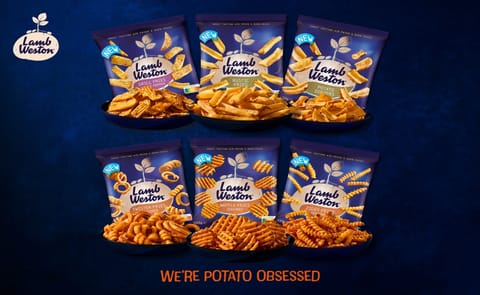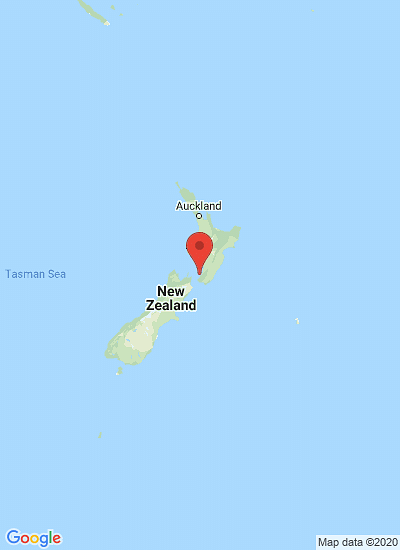Plant seed potatoes now and you'll be digging up your own buried treasure in just a few months. (Courtesy: Sally Tagg)
Solapas principales
Potatoes from plot to plate: how to grow the perfect spuds in your New Zealand backyard
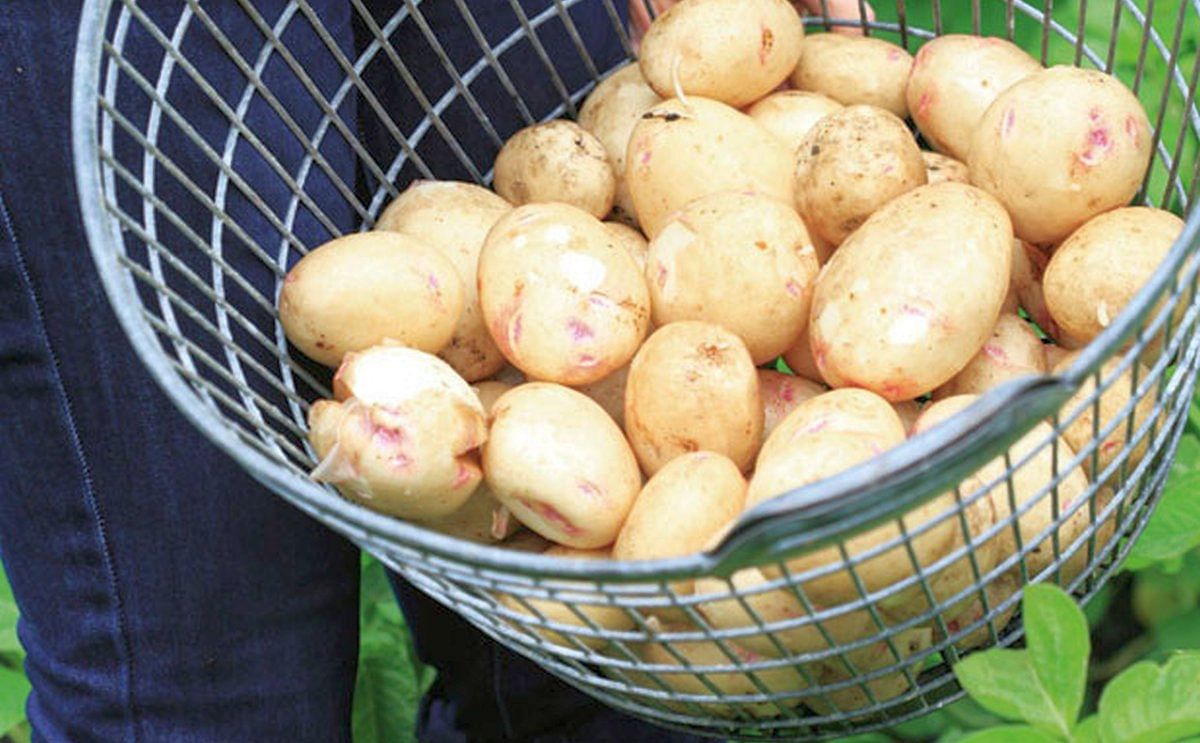
While in the Northern hemisphere we are harvesting potatoes and getting ready for winter, this is not the case in the Southern hemisphere. We came across this article on how to grow your own potatoes in New Zealand - if you are not a farmer - with some local tips and variety references, by Lynda Hallinan, from NZ Gardener:
Lynda Hallinan, from NZ Gardener:
“I'm afraid I can't write about potatoes without coming across as some sort of carb-loading crackpot. ”
“ Potatoes are, without a doubt, my favourite vegetable to grow – and eat. In my country garden, I grow sacks of them. Indeed, at this time of the year, no empty bed is safe from seed spuds. ”
“ Potatoes are easy to grow in most soils and are reliably productive; spud self-sufficiency isn't an unrealistic goal for gardeners with enough space. ”
“ When I first traded my city garden for life in the country, I grew far more potatoes than we could eat. I couldn't help myself – with all that virgin soil at my disposal, I shoved in seed spuds by the 25kg sackful and dug up almost one-quarter of a tonne of early tubers. I was very popular at the Clevedon Farmers’ Market that Christmas!”
“ I’ve grown potatoes for most of my adult life – in beds, boxes, bags and buckets – and, despite Irish ancestry, the only crop failure I’ve experienced was due, not to blight, but to a record wet winter. All my seed tubers rotted, leaving neatly spaced lines of potato-sized divots in the trenches.”
“ Pre-sprouting goes a long way to avoiding that issue, but if your soil is still sodden this month, it’s better to be slow off the mark than sorry.”
“Potatoes are frost-tender. Plant too soon for your climate and, if Jack Frost shows up late to tickle their green leafy tops, all that lush foliage will turn to black mush. Place sheets of newspaper over your spuds on cold, clear nights just in case. ”
“ I probably inherited my passion for potatoes from my grandparents. My paternal grandfather, Albert, planted an early crop on September the first each year, noting it in his farm diary. He also sowed peas and green beans to serve with those spuds, while Grandma Clarice would knock off one of her old chooks to drown in gravy.”
The popular pick
According to the experts at 5+aday, potatoes are the undisputed kings of the Kiwi dinner table, with over half of us (53 per cent) eating fresh potatoes four times a week, and one-fifth of us scoffing them every single day.
Potatoes are certainly the most popular vegetable in my house; they are the only vegetable my children will eat without complaint, regardless of how they are cooked.
Like mother, like sons: I'm greedy for gratin, mad about mash (made with cream not low-fat milk) and I’m prepared to put in the effort for perfect roasties and chips.
For the best roast potatoes, chop floury spuds into large chunks, and par-boil in salted water. Drain and set aside to cool, then crush gently with a fork and pile into a roasting dish with dripping – I make a special trip to the butchers – or duck fat. Roast at 200°C until golden and crispy.
As for fries, twice cooking is key. Deep fry in clean oil until they show colour, then scoop out into a colander lined with paper towels and set aside. To finish them off, refry until golden-brown, strain, salt and serve straight away with small bowls of aioli and tomato sauce (no double-dipping!).
Whether you want to grow enough spuds to feed your family year-round, or just enough to satisfy a few special occasion cravings, spring is the time to get started. Plant seed potatoes today and, in three months, you’ll be digging up your own buried treasure.
Here are some common questions on how to grow potatoes.
What on Earth does chitting mean?
Chitting simply means pre-sprouting your seed potatoes prior to planting, so you can be sure they will flourish once bedded into the soil. To 'chit' seed potatoes, lay them all out in a single layer in a cardboard box lined with newspaper, or in egg cartons, and set aside in a warm shed or spare room until sprouts pop out of their eyes.
When these sprouts are about 1cm long, they can be planted. Don't let them get much longer than 2-3cm or you run the risk of accidentally breaking them off when shovelling soil over the top.
Do potatoes crop well in pots?
Potatoes can be grown in large containers, deep planter bags or flexible trugs (with drainage holes in the base) but expect a lower yield than a traditional in-ground crop.
Over the years I've judged several school spud-in-a-bucket competitions – each child is given a single seed tuber to grow in a cheap 9-litre plastic bucket – and their yields have ranged from 1-4kg, with the occasional dud. (That's not bad for gourmet baby potatoes).
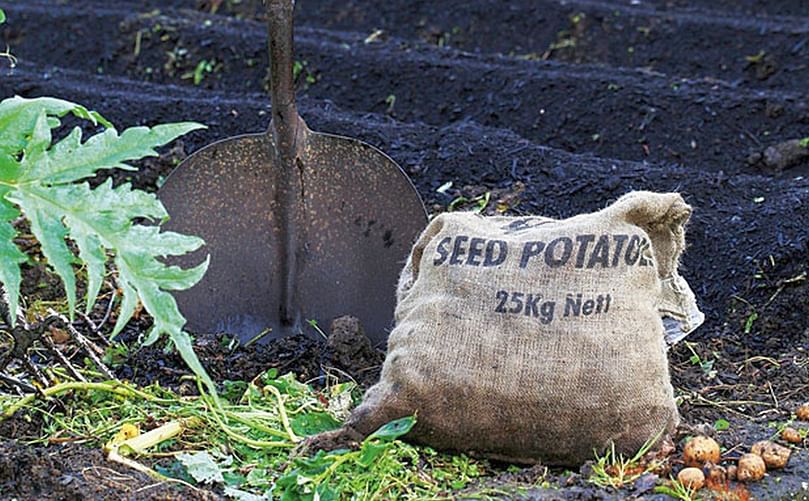
Don't bury spuds deep in cold trenches in September - they can rot before they see the sun. (Courtesy: Sally Tagg)
Stick to early varieties such as 'Cliff’s Kidney', 'Jersey Benne', 'Rocket' and 'Swift', which are ready in 70-90 days. They’re also more compact (their tops grow 30-40cm high) than main croppers such as 'Agria'.
I've had better luck growing potatoes in planter bags filled with my own topsoil or spent mushroom compost than potting mix, which seems too light.
Put your pots somewhere that allows for full sun on the green tops, but shade on the roots, such as off the side of a deck.
Water frequently and add liquid fertiliser to your watering can to boost growth of the tops, and the tubers.
I have a small garden. Could I save space by planting potatoes in old tyres?
You could, but why would you want to? For starters, tyres take up roughly the same amount of space as you'd need to grow those same spuds in soil – and if you have no soil to plant in, I'd opt for planter bags over a stack of recycled tyres any day.
Although the idea of growing spuds in tyres appeals on many levels (literally) by allowing you to easily mound up for bigger yields while repurposing landfill waste, there are some food safety concerns.
Potatoes grow best in full sun, but in full sun, the rubber will heat up the soil inside them, which potato roots don't appreciate, and heating the tyres can also speed up potential leaching of toxins and pollutants.
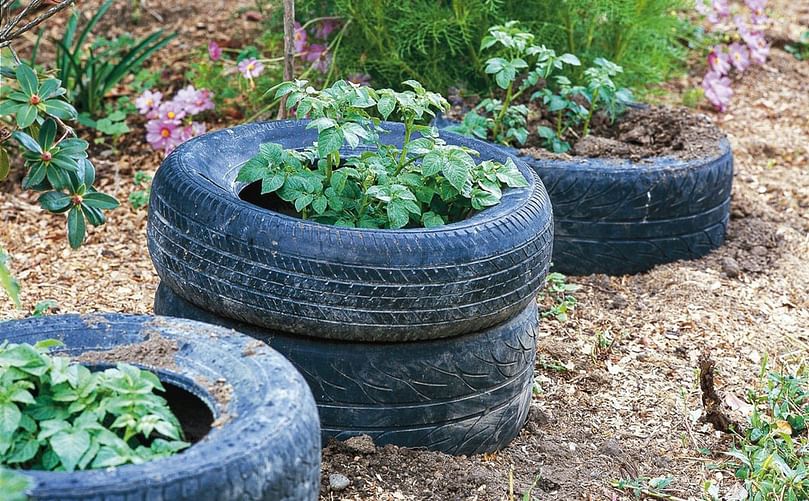
You may want to reconsider planting spuds in tyres. (Courtesy: Julian Matthews)
A few years ago we asked the experts at NZ Plant and Food Research for their expert scientific advice on the subject; they said that, as the growth of spuds is faster than the breakdown of tyres in any given year, you're unlikely to see much contamination if you stick to a spud tower for a single season.
After that, plant flowers or spring bulbs in your tower instead.
How much effort should I put into soil preparation?
If you've never grown potatoes before, you're in luck, as spuds largely prepare their own soil, digging deep and breaking up heavy clods with their burrowing roots and tubers. If you’re turning over a patch of lawn to make a vege patch, potatoes are an ideal first crop.
Like most plants, potatoes prefer deep, free-draining soil that doesn't stick to your spade (like heavy clay) or lose moisture too quickly (like sandy soil). The best way to achieve this is to dig in compost and use organic fertilisers such as sheep pellets or chook poo-based products.
Mulching around the plants to suppress weed growth and keep the roots cool is also beneficial; dig the mulch in after harvest.
Potatoes prefer slightly acidic conditions, so steer clear of adding lime when planting, as this makes them susceptible to potato scab. This disease flourishes in alkaline conditions and causes ugly brown lumps and pitted lesions on the skins that, though largely cosmetic (just peel them off in the kitchen), are definitely off-putting.
As for feeding throughout the season, there are a number of specialist potato fertiliser brands available but I've never used them. Once my spuds are in the ground, I simply leave them be.
When are potatoes ready to dig up?
Early varieties can take as little as 70 days to harvest, whereas long-keeping main croppers can take twice as long.
After main crop varieties flower, let the tops die down fully (to harden the tuber skins for storage). Early varieties may not flower and simply yellow off, causing many novice growers to fret that they’ve killed their plants.
Keep a record of the varieties you've put in – and the date you planted them – then count forward on a calendar and make a note of when you expect them to be ready.
Why are potatoes described as either waxy or floury?
Potato varieties are classified by the texture of their flesh, which dictates which cooking purposes suit them best, but to complicate matters, this texture changes throughout the season depending on how much of their natural sugars have converted into starch (making them floury) before being eaten.
Waxy potatoes (earlies and new season's potatoes) have more water in their flesh, meaning they're no good for chipping or baking, as their flesh stays firm, whereas floury potatoes turn soft and fluffy. Waxy potatoes are best steamed, boiled or cubed into soups and stews as they hold their shape and won't fall apart in liquid.
Main crop potatoes have drier, starchier, floury flesh and thicker skins, which is why they keep so well. These take longer to grow but will store for up to six months if kept dry and out of the light, in paper bags or cardboard boxes.
Incidentally, don't wash potatoes after harvesting unless you intend to eat them straight away, as this significantly lessens their shelf life.
Floury varieties are best for mashing, baking, chipping and roasting. Indeed, one of the flouriest potatoes of all is 'Russet Burbank', famous the world over as the source of fast food French fries. Sadly, it's not available to home gardeners, but I got my hands on some a few years ago and grew huge oval tubers the size of mini rugby balls. One spud was enough for dinner for four!
Is it true that spuds are fattening?
Despite being a staple crop around the world, potatoes get bad press because they fall foul of faddish low-carb diets.
Yet they are fat-free, a good source of vitamin C, vitamin B4 and potassium – plus they're a nutritious, filling way to feed a big family without breaking the budget.
If you are cutting carbs, try branded Lotatoes, for 40 per cent fewer carbs than 'Agria' or 'Rua'. As an ingredient, potatoes aren't the problem: it's how we cook them (and how many we eat).
Mashed with butter, baked and topped with sour cream and chives, roasted in oil or deep-fried as chips, potatoes are the ultimate comfort food.
Take gnocchi, those huhu grub-lookalike Italian pasta dumplings. When Nadia Lim showed how easy it is to turn 'Agria' spuds into gnocchi in the first episode of her Covid-19 lockdown TV show, she bumped Ashley Bloomfield and Jacinda Ardern's daily updates from top billing (on my social media feeds at least). Find her recipe at tvnz.co.nz under Nadia's Comfort Kitchen.
And did you know that researchers have discovered that cooking, then cooling spuds before reheating and eating can triple their resistant starch content (fibre our bodies can’t easily absorb, so doesn’t cause a spike in blood sugar levels).
Consequently, eating cold potatoes or last night's leftovers for breakfast could actually aid weight loss.





